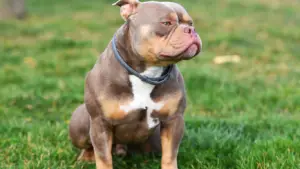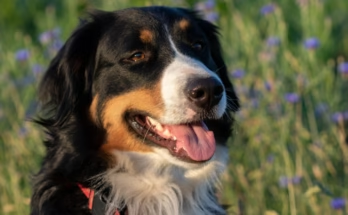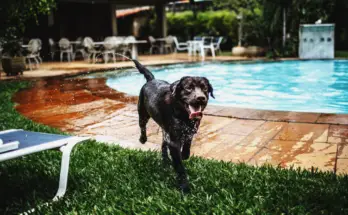Training an American Bully dog is a rewarding experience that builds a strong bond between you and your loyal companion. Despite common misconceptions, these dogs are gentle, intelligent, and eager to please when properly trained and socialized. If you’re looking to raise a well-behaved and happy American Bully, this guide covers everything you need to know about effective training techniques, tips, and common mistakes to avoid.
What Makes American Bullies Unique?
The American Bully is a relatively new breed, officially recognized by the United Kennel Club in 2013. While often confused with Pitbulls, American Bullies are a separate breed known for their muscular build, affectionate nature, and adaptability. These dogs thrive on human companionship and are highly trainable, making them excellent family pets and active participants in dog sports like agility, trick training, and more.
However, their strong appearance has led to unfair stereotypes about aggression. In reality, American Bullies are loving and protective, making them great with children when properly raised and trained.
Positive Reinforcement: The Best Training Method
American Bullies excel with positive reinforcement training, where good behavior is rewarded with treats, praise, toys, or playtime. Avoid using harsh methods like prong collars or e-collars, as these can damage your dog’s trust and confidence.
Key Tips for Positive Reinforcement:
- Use small, tasty treats as rewards during training sessions.
- Keep sessions short (5–10 minutes) to maintain your dog’s focus.
- Be consistent with commands and rewards to avoid confusing your dog.
- Celebrate small wins, such as learning basic commands like “sit” or “stay.”

Socialization: Start Early
Socialization is critical to training an American Bully, especially during the puppy stage. Introduce your dog to new environments, people, and other animals to build confidence and reduce the risk of fear-based behaviors.
How to Socialize Your American Bully:
- Take them on short outings to pet-friendly places.
- Arrange supervised playdates with other dogs.
- Expose them to different sounds, smells, and surfaces.
- Reward calm and positive behavior during new experiences.
Essential Commands Every American Bully Should Learn
Start with basic obedience commands to ensure your dog behaves well at home and in public. These commands are essential for safety and managing their strength.
- Name Recognition: Teach your dog to respond to their name by calling it and rewarding them when they look at you.
- Recall (“Come”): Ensure your dog comes to you reliably, even in distracting environments.
- Basic Commands: Teach “sit,” “stay,” “down,” and “leave it” using treats and consistent cues.

Preventing Unwanted Behaviors
American Bullies are active and intelligent, which means they can develop unwanted behaviors like chewing, digging, or barking if their needs aren’t met.
Preventive Tips:
- Provide plenty of toys, chews, and mental stimulation to prevent boredom.
- Redirect bad behavior: If your dog chews on furniture, replace it with an appropriate chew toy and praise them when they use it.
Exercise and Mental Stimulation
American Bullies need daily exercise to stay healthy and well-behaved. This breed enjoys activities like hiking, running, or playing fetch. Pair physical exercise with mental challenges like puzzle toys, obedience drills, or scent games to keep them engaged.
Why Exercise Matters:
- Reduces destructive behaviors caused by boredom.
- It improves overall health and reduces anxiety.
- Strengthens the bond between you and your dog.
Advanced Training and Fun Activities
Once your American Bully masters the basics, you can explore advanced training or fun activities like:
- Agility Training: Great for building confidence and channeling their energy.
- Trick Training: Teach fun tricks like “rollover” or “shake.”
- Scent Work: Engage their natural sniffing instincts with hide-and-seek games.
These activities keep your dog physically and mentally fit and deepen your connection with them.
Professional Training Support

If you’re struggling with specific behaviors, consider working with a professional dog trainer. Enroll your puppy in obedience classes or book private sessions for personalized guidance. Look for trainers who use positive reinforcement techniques and have good reviews.
Pro Tip: Avoid trainers who use punishment-based methods, as these can harm your dog’s temperament and trust.
Conclusion
Training an American Bully dog is about patience, consistency, and love. These loyal and intelligent dogs thrive with positive reinforcement and proper socialization. By meeting their physical and mental needs, you’ll have a happy, well-behaved companion who brings joy to your family for years to come.
We’d love to hear from you! Share your experiences and tips on training your American Bully in the comments below. If you’re looking for high-quality dog food and treats to support your Bully’s training journey, check out our range of high-protein options designed specifically for bully breeds!
FAQs About Training an American Bully Dog
1. How long does it take to train an American Bully?
Training time varies depending on the dog’s age, temperament, and consistency. Basic commands can take a few weeks, but consistent reinforcement is key for long-term results.
2. At what age should I start training my American Bully?
Start training as early as 8 weeks old. Puppies are more receptive to learning during this stage, especially for socialization and basic obedience.
3. Are American Bullies good with children?
Yes, American Bullies are known for their gentle and protective nature around kids. Proper training and supervision ensure they interact safely with children.
4. What’s the best way to handle aggressive behavior?
Aggression in American Bullies is rare if they’re properly socialized and trained. If you notice aggressive tendencies, consult a professional trainer or behaviorist to address the issue early.
5. How can I stop my American Bully from pulling on the leash?
Train leash manners by rewarding your dog for walking beside you. Stop walking when they pull and resume only when the leash is slack. Patience and consistency will help!




